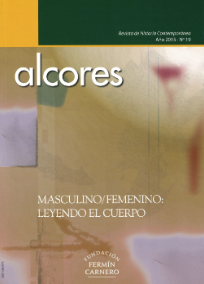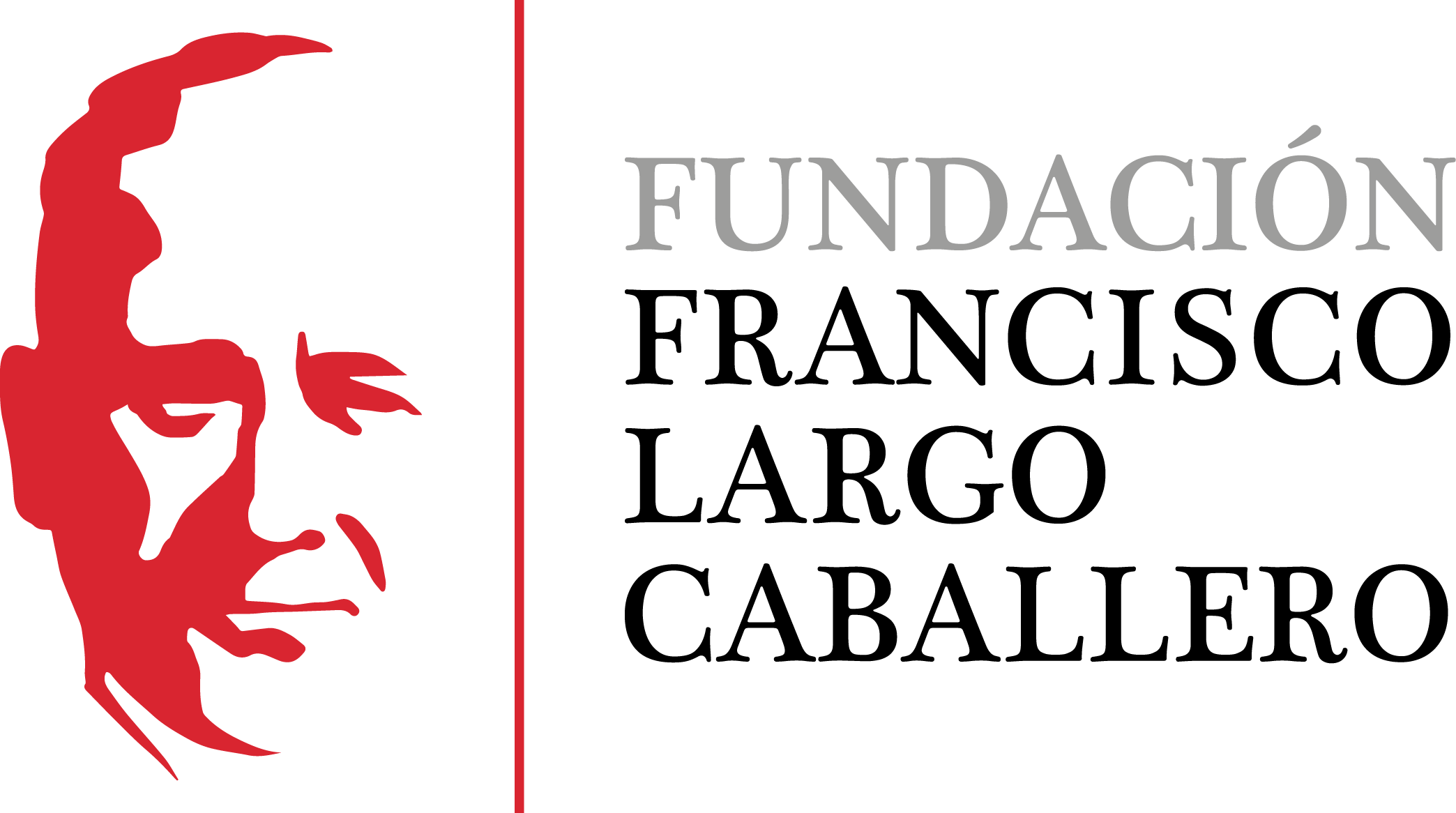Cuerpos degenerados. El desnudo en las fotografías de la liberación del campo de concentración de Bergen-Belsen.
DOI:
https://doi.org/10.69791/rahc.83Palabras clave:
Desnudo, Fotografías, Campos de concentración nazis, Identidades de género, DeshumanizaciónResumen
En las fotografías de la liberación del campo de concentración de Bergen-Belsen realizadas por la AFPU el desnudo tiene un carácter central a la hora de representar los “cuerpos degenerados” que habitan las instalaciones del horror. Esta centralidad no sólo es consecuencia de que la desnudez es consustancial a la naturaleza del deportado, sino también de que el desnudo se confirma como una herramienta adecuada para representar el pathos del sufrimiento en el contexto de las atrocidades. Particularmente, el desnudo muestra de manera excepcional el grado de degeneración/desexualización experimentado por los cuerpos expuestos a la violencia del nazismo.
Descargas
Estadísticas globales ℹ️
|
224
Visualizaciones
|
72
Descargas
|
|
296
Total
|
|
Citas
Agamben, G.: Homo Sacer I. El poder soberano y la nuda vida, Valencia, Pre-Textos, 2010.
Bardgett, S. y Cesarani, D. (eds.): Belsen 1945: New Historical Perspectives, Edgware, Vallentine Mitchell, 2006.
Barthes, R.: La cámara lúcida: Nota sobre la fotografía, Barcelona, Paidós, 2010.
Becker, A.: "Exterminios. El cuerpo y los campos de concentración", en J. J.
Courtine, Historia del cuerpo (III). Las mutaciones de la mirada. El siglo XX, Madrid, Santillana Ediciones, 2006, pp. 313-30.
Bourke, J.: Los violadores: historia del estupro de 1860 a nuestros días, traducido por Enrique Herrando Pérez. Barcelona, Crítica, 2009.
Butler, J.: Cuerpos que importan: sobre los límites materiales y discursivos del "sexo", Buenos Aires (etc.), Paidós, 2005.
Butler, J.: El género en disputa: el feminismo y la subversión de la identidad, México, Paidós, 2001.
Butler, J.:. Marcos de guerra: Las vidas lloradas, Barcelona, Paidós, 2010.
Caven, H.: "Horror in Our Time: Images of the Concentration Camps in the British Media, 1945", Historical Journal of Film, Radio and Television 21, nº 3 (2001), pp. 205-53. https://doi.org/10.1080/01439680120069399 DOI: https://doi.org/10.1080/01439680120069399
Chamberlin, B. y Feldman, M. (eds.): The Liberation of the Nazi Concentration Camps 1945: Eyewitness Accounts of the Liberators, Washington, D.C., United States Holocaust Memorial Council, 1987.
Clark, K.: El desnudo: un estudio de la forma ideal, Madrid, Alianza, 1981.
Didi-Huberman, G.: Imágenes pese a todo: memoria visual del Holocausto, Barcelona, Paidós, 2004.
Didi-Huberman, G.: Venus rajada: desnudez, sueño, crueldad, Madrid, Losada, 2005.
Dubois, P.: El acto fotográfico: de la representación a la recepción, Barcelona [etc.], Paidós, 1999.
Eliach, Y. y Gurewitsch, B. (eds.): The Liberators: Eyewitness Accounts of the Liberations of Concentration Camps, Brooklyn, Center for Holocaust Studies, Documentation and Research, 1981.
Fangrad, A.: Wartime Rape and Sexual Violence: An Examination of the Perpetrators, Motivations, and Functions of Sexual Violence Against Jewish Women during the Holocaust, Bloomington, Author House, 2013.
Feinstein, M. M.: Holocaust Survivors in Postwar Germany, 1945-1957, Cambridge y Nueva York, Cambridge University Press, 2010.
Glastone, K.: "The AFPU: the Origins of British Army Combat Filming during the Second World War", Film History 14, nº 3/4 (2002), pp. 316-31. https://doi.org/10.2979/FIL.2002.14.3-4.316 DOI: https://doi.org/10.2979/FIL.2002.14.3-4.316
Goldman, A. L.: "Press Freedom in Britain during World War Two", Journalism History 22, nº 4 (Invierno de de 1997), pp. 146-55. https://doi.org/10.1080/00947679.1997.12062452 DOI: https://doi.org/10.1080/00947679.1997.12062452
Grant, I.: Cameramen at War, Cambridge, Stephens, 1980.
Grossman, A.: Jews, Germans, and Allies: Close Encounters in Occupied Germany, Princeton, Princeton University Press, 2007. https://doi.org/10.1515/9781400832743 DOI: https://doi.org/10.1515/9781400832743
Haggith, T.: "The Filming of the Liberation of Bergen-Belsen and Its Impact on the Understanding of the Holocaust", en S. Bardgett y Cesarani, D.: Belsen 1945: New Historical Perspectives, Edgware, Vallentine Mitchell, 2006, pp. 89-122. https://doi.org/10.1080/17504902.2006.11087180 DOI: https://doi.org/10.1080/17504902.2006.11087180
Hedgepeth, S. M. y Saidel, R. G. (eds.): Sexual Violence Against Jewish Women During the Holocaust, Hanover y Londres, University Press of New England, 2010.
Holmila, A.: Reporting the Holocaust in the British, Swedish and Finnish Press, 1945-50, Houndmills, Basingstoke, Hampshire y Nueva York, Palgrave Macmillan, 2011. https://doi.org/10.1057/9780230305861 DOI: https://doi.org/10.1057/9780230305861
Lewinski, J.: The Naked and the Nude: a History of Nude Photography, Londres, Weidenfeld and Nicolson, 1987.
Martos, P.: Sobrevivir sin género en la zona gris. La deshumanización en los campos de concentración nazi en perspectiva feminista, tesis inédita dirigida por Elena Hernández Sandoica y Reyes Mate Rupérez. Universidad Complutense de Madrid, Facultad de Geografía e Historia, 2015.
McGlade, F.: The History of the British Army Film & Photographic Unit in the Second World War, Solihull, Helion & Company, 2010.
Nead, L.: El desnudo femenino: arte, obscenidad y sexualidad, Madrid, Tecnos, 1998.
Reilly, J.: Belsen: The Liberation of a Concentration Camp, Londres, Routledge, 1998.
Reilly, J., Cesarani, D., Kushner, T. y Richmond, C. (eds.): Belsen in History and Memory, Londres, Frank Cass, 1997.
Shephard, B.: After Daybreak: The Liberation of Belsen, 1945, Londres, Jonathan Cape, 2005.
Sontag, S.: Ante el dolor de los demás, Madrid, Santillana, 2003.
Sontag, S.Sobre la fotografía, traducido por Carlos Gardini. 3a ed. Barcelona, Debolsillo, 2010.
Struk, J.: Photographing the Holocaust: Interpretations of the Evidence, Londres y Nueva York, I.B. Tauris, 2004.
Swiebocka, T.: Auschwitz: A History in Photographs, Bloomington y Varsovia, Indiana University Press y Ksiazka I Wiedza, 1993.
Tagg, J.: The Burden of Representation: Essays on Photographies and Histories, Houndmills, Basingstoke, Hampshire y Londres, Macmillan, 1988. https://doi.org/10.1007/978-1-349-19355-4 DOI: https://doi.org/10.1007/978-1-349-19355-4
Weindling, P.: ""Belsenitis": Liberating Belsen, Its Hospitals, UNRRA, and Selection for Re-emigration, 1945-1948", Science in Context 19, nº 3 (2006), pp. 401-18. https://doi.org/10.1017/S0269889706000998 DOI: https://doi.org/10.1017/S0269889706000998
Zelizer, B.: "Gender and Atrocity: Women in Holocaust Photographs", en B. Zelizer, Visual Culture and the Holocaust, New Brunswick, Rutgers University Press, 2000, pp. 247-71.
Zelizer, B.: Remembering to Forget: Holocaust Memory Through the Camera's Eye, Chicago, University of Chicago Press, 1998.
Zerner, H. (ed.): "La mirada de los artistas", en A. Corbin (dir.), Historia del cuerpo (II). De la Revolución Francesa a la Gran Guerra, Madrid, Santillana Ediciones, 2005, pp. 87-116.
Descargas
Publicado
Cómo citar
Número
Sección
Licencia
Derechos de autor 2016 Paula Martos Ardid

Esta obra está bajo una licencia internacional Creative Commons Atribución 4.0.
Alcores es una revista de acceso abierto. Facilita el acceso sin restricciones a sus contenidos desde el momento de su publicación. Respetamos los derechos de propiedad intelectual y, por ese motivo, el autor conserva los derechos de autor. Todos los contenidos se distribuyen bajo una licencia de uso y distribución Creative Commons Reconocimiento 4.0 Internacional (CC BY 4.0). Las condiciones de la licencia se pueden consultar en https://creativecommons.org/licenses/by/4.0/
Con esta licencia se permite compartir (copiar y redistribuir el material en cualquier medio o formato) y adaptar (remezclar, transformar y crear a partir del material para cualquier finalidad), siempre que se reconozca la autoría y la primera publicación en esta revista, se proporcione un enlace a la licencia y se indique si se han realizado cambios.
Este tipo de licencia facilita la libertad de reutilización y asegura que los contenidos de esta revista puedan ser utilizados para las necesidades de investigación.





